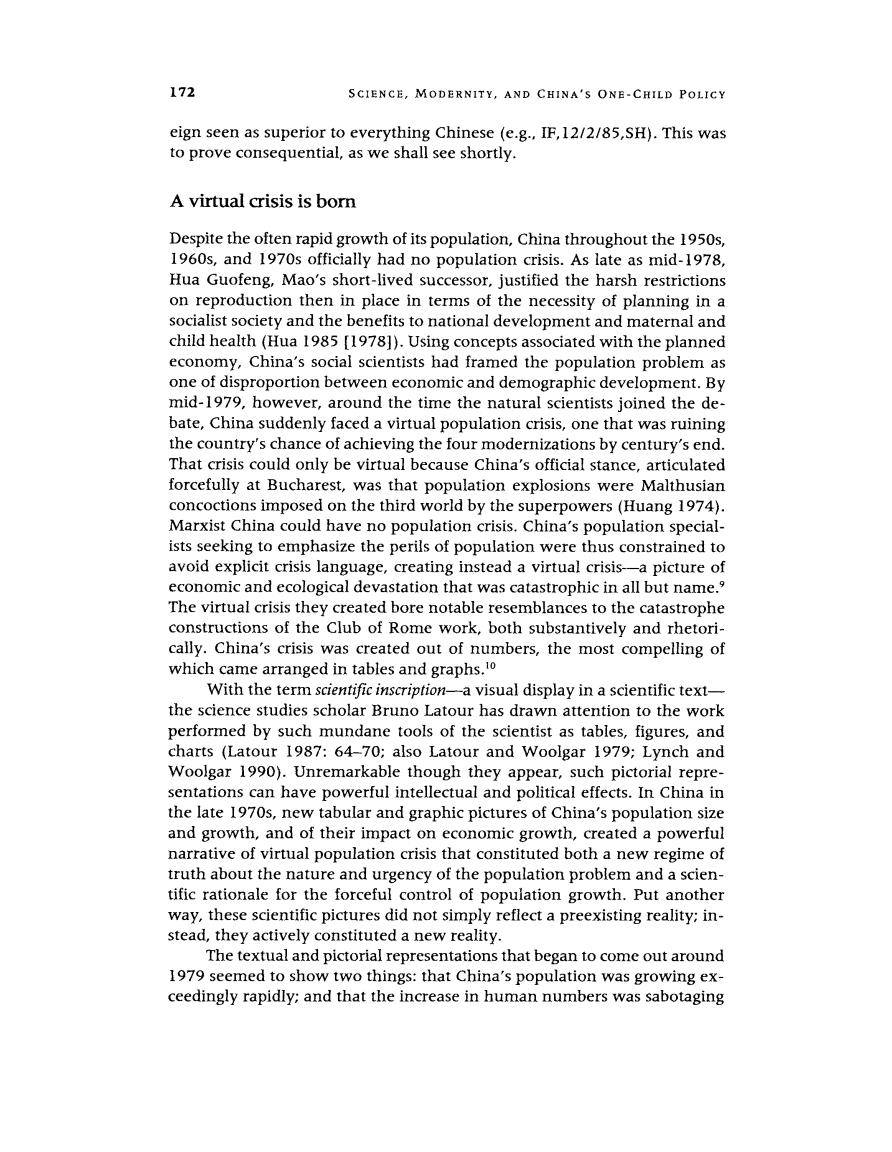正在加载图片...

172 SCIENCE,MODERNITY,AND CHINA'S ONE-CHILD POLICY eign seen as superior to everything Chinese (e.g.,IF,12/2/85,SH).This was to prove consequential,as we shall see shortly. A virtual crisis is born Despite the often rapid growth of its population,China throughout the 1950s, 1960s,and 1970s officially had no population crisis.As late as mid-1978, Hua Guofeng,Mao's short-lived successor,justified the harsh restrictions on reproduction then in place in terms of the necessity of planning in a socialist society and the benefits to national development and maternal and child health(Hua 1985 [1978]).Using concepts associated with the planned economy,China's social scientists had framed the population problem as one of disproportion between economic and demographic development.By mid-1979,however,around the time the natural scientists joined the de- bate,China suddenly faced a virtual population crisis,one that was ruining the country's chance of achieving the four modernizations by century's end. That crisis could only be virtual because China's official stance,articulated forcefully at Bucharest,was that population explosions were Malthusian concoctions imposed on the third world by the superpowers(Huang 1974). Marxist China could have no population crisis.China's population special- ists seeking to emphasize the perils of population were thus constrained to avoid explicit crisis language,creating instead a virtual crisis--a picture of economic and ecological devastation that was catastrophic in all but name.? The virtual crisis they created bore notable resemblances to the catastrophe constructions of the Club of Rome work,both substantively and rhetori- cally.China's crisis was created out of numbers,the most compelling of which came arranged in tables and graphs.10 With the term scientific inscription-a visual display in a scientific text- the science studies scholar Bruno Latour has drawn attention to the work performed by such mundane tools of the scientist as tables,figures,and charts (Latour 1987:64-70;also Latour and Woolgar 1979;Lynch and Woolgar 1990).Unremarkable though they appear,such pictorial repre- sentations can have powerful intellectual and political effects.In China in the late 1970s,new tabular and graphic pictures of China's population size and growth,and of their impact on economic growth,created a powerful narrative of virtual population crisis that constituted both a new regime of truth about the nature and urgency of the population problem and a scien- tific rationale for the forceful control of population growth.Put another way,these scientific pictures did not simply reflect a preexisting reality;in- stead,they actively constituted a new reality. The textual and pictorial representations that began to come out around 1979 seemed to show two things:that China's population was growing ex- ceedingly rapidly;and that the increase in human numbers was sabotaging